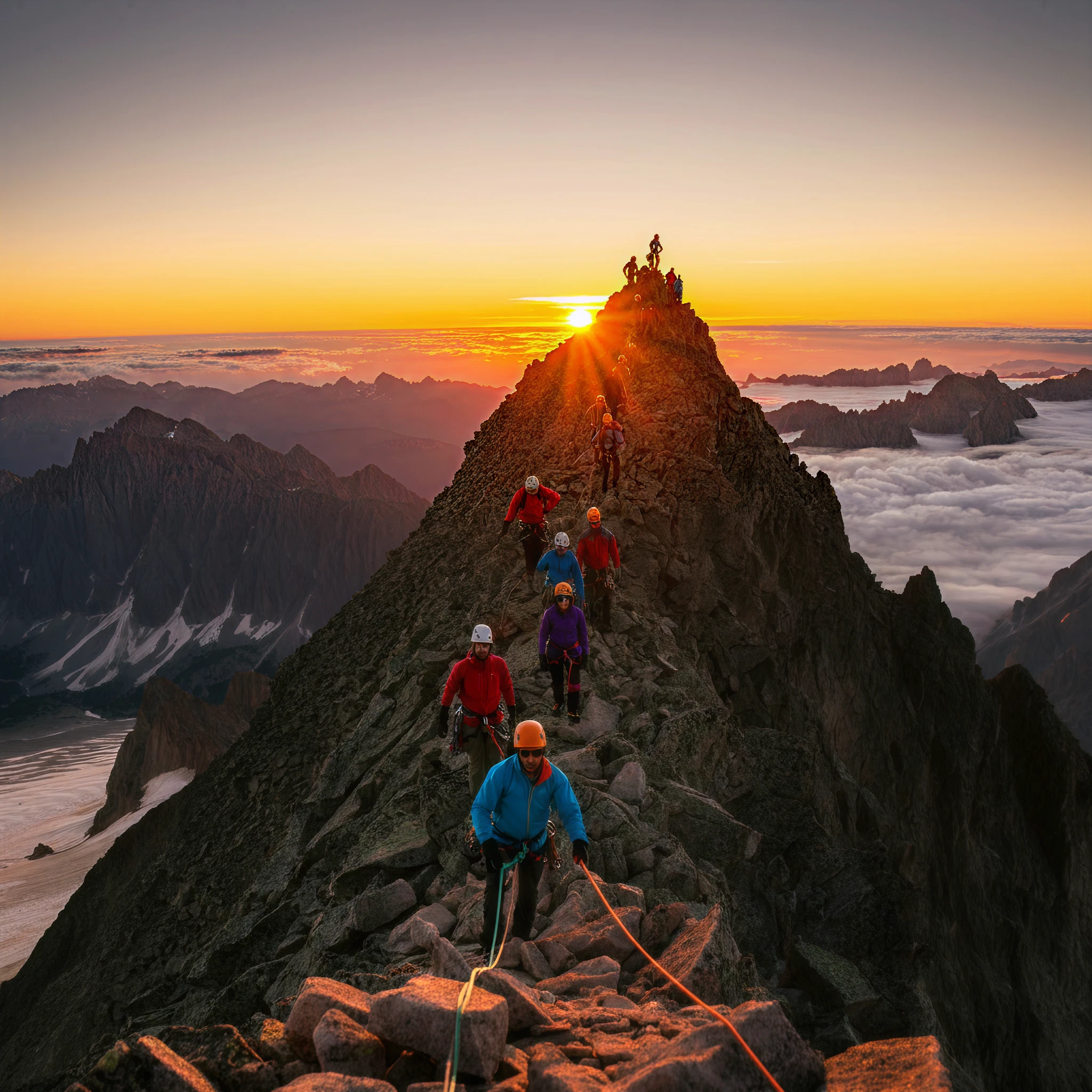Climbing Mount Everest, the towering 8,848-meter giant, is considered one of the most extraordinary feats of adventure and endurance. For decades, climbers have been drawn to the mountain’s allure, but despite modern advances in technology, training, and preparation, summiting Everest remains one of the most challenging endeavors imaginable.
Here, we’ll explore the difficulty of climbing Mount Everest, what makes it so challenging, and the immense preparation it requires.
Why Is Climbing Mount Everest Hard?
1. The Altitude
At its peak, the air pressure on Mount Everest is roughly one-third of the air pressure at sea level, meaning there’s significantly less oxygen to breathe. Even at base camp (5,380 meters on the south side), the reduced oxygen makes physically exerting tasks exhausting.
Above 8,000 meters lies the “Death Zone,” where the air is so thin that the human body starts to deteriorate. Without supplemental oxygen, climbers risk altitude sickness, hypoxia, confusion, and even death.
2. Unpredictable Weather
Weather conditions on Everest can change dramatically in a matter of hours. Climbers sometimes face hurricane-strength winds and temperatures as low as -30°C (-22°F). Storms can form suddenly, leaving climbers exposed to frostbite, hypothermia, and dangerous whiteout conditions. Timing the summit attempt in favorable weather is critical.
3. Physical and Technical Challenges
The climb demands exceptional physical strength and stamina. The steep ascents and icy terrain push even seasoned climbers to their limits. Areas like the Khumbu Icefall, with its constantly shifting seracs and cracks, present immense technical difficulty and risk.
Additionally, the southern route is known for its nearly vertical Hillary Step, where climbers must scramble over rock and ice at an altitude where every breath is a struggle.
4. Extended Duration
Climbing Mount Everest isn’t a quick endeavor. Expeditions from the south side typically take around 60 days to complete, with roughly 50 days from the north side. This includes time spent acclimatizing to the altitude and waiting for a favorable summit window. Sustaining physical endurance over such a long period is exceptionally hard.
5. The Risks
Mount Everest presents life-threatening risks, including avalanches, crevasses, and falls. Avalanches, for example, are among the leading causes of death on the mountain. Without proper preparation and experience, the dangers of Everest can become insurmountable.
What Preparation Is Needed to Climb Everest?
Although climbing Everest is notoriously difficult, it doesn’t take a superhuman to achieve the feat. It does, however, require years of intensive preparation and training.
1. Training for Fitness and Stamina
To summit Everest, climbers need to be in peak physical condition. Most climbers dedicate at least a year to high-altitude training. Building cardiovascular endurance and leg strength is essential. Activities like hill runs, high-altitude trekking, and strength training help prepare climbers for the grueling ascent.
2. High-Altitude Climbing Experience
Climbing experience is critical for Everest. Most successful climbers practice on lower peaks above 6,000 meters, like Lobuche East or Island Peak, and work their way up to higher summits like Manaslu (8,163 meters). Previous experience teaches climbers how to use crampons, ice axes, and ropes, as well as how to handle the physical effects of high altitudes.
3. Acclimatization
Acclimatization is the process of gradually exposing your body to higher altitudes to reduce the risk of altitude sickness. This involves spending weeks trekking to base camp and progressively climbing and descending parts of the mountain to acclimate before the final summit push. Rushing this process can have fatal consequences.
4. Guides and Sherpas
Experienced guides and Sherpas play a vital role in helping climbers manage risks and challenges. Sherpas, native to the Himalayan region, are known for their strength, experience at high altitudes, and assistance in carrying gear. Guides also set up ropes, camps, and provide strategic advice to improve the team’s chances of success.
Main Risks of Climbing Mount Everest
- Avalanches
Sudden avalanches can occur due to shifting snow, ice, or seismic activity, posing a constant danger to climbers.
- Altitude Sickness
Symptoms like headaches, nausea, and confusion can quickly escalate to life-threatening conditions such as pulmonary or cerebral edema.
- Exposure and Frostbite
Harsh winds and sub-zero temperatures cause frostbite, which can lead to loss of fingers, toes, or even limbs if not treated in time.
- Crevasses
Treacherous cracks in the ice make glacier travel one of the riskiest parts of the climb. Falling into a crevasse can be fatal.
- Exhaustion
Many climbers push themselves beyond their limits during the summit attempt. The descent is equally dangerous, as exhaustion and lack of focus increase the chances of accidents.
How Hard Is It Really to Summit Everest?
Historically, less than 30% of climbers attempting the summit succeeded. With the advances in climbing technology, weather forecasting, and infrastructure like pre-set ropes, success rates are now closer to 50%.
Yet, Everest remains extremely difficult, and it’s not just a case of technical skills or physical fitness. Climbers need mental resilience to face uncertainty, grueling conditions, and their own limits. The mountain demands respect and preparation, but for those who are ready, reaching its summit is an achievement like no other.
Is Climbing Everest Right for You?
If you’re wondering, «How hard is it to climb Everest?» the truth is, it’s one of the hardest challenges a climber will face—but it’s also a deeply personal decision. The combination of proper preparation, physical fitness, guidance, and mental toughness play pivotal roles in determining whether the climb is right for you.
Not ready for Everest quite yet? Consider starting with smaller high-altitude climbs before attempting the ultimate mountaineering feat.
Whatever your adventure goals, prepare properly and climb safely! Everest waits for no one, but with time, training, and determination, you might just stand atop the highest point on earth.








